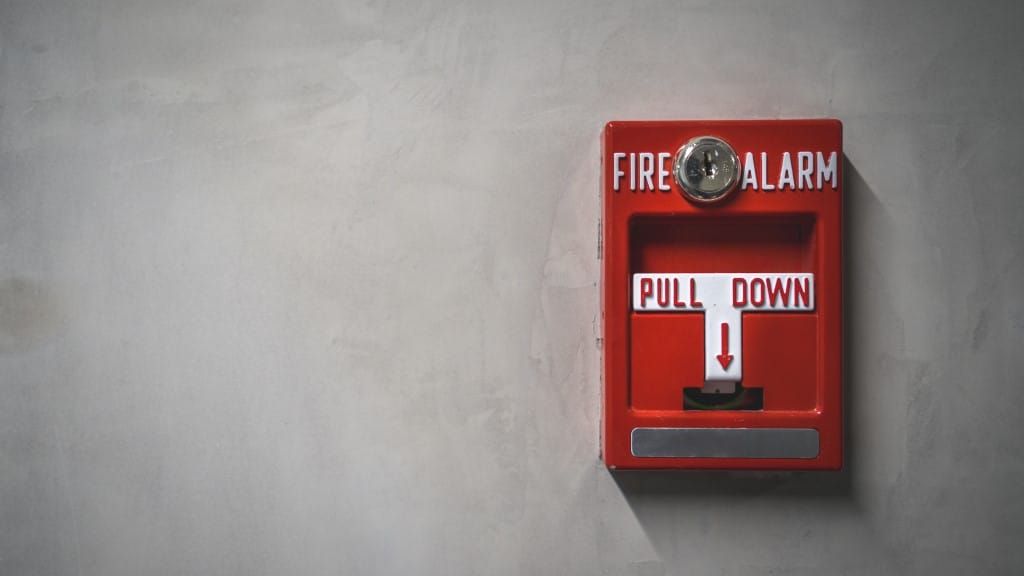Scottish Fire and Rescue Service introduces “call challenge” approach to reduce false alarms
- June 30, 2023
- 1:18 pm


Iain Hoey
Share this content
The “call challenge” approach: Aiming to bring down false alarms
Starting 1st July 2023, the Scottish Fire and Rescue Service (SFRS) has stated that they will no longer respond to all automatic fire alarm system signals.
Instead, a “call challenge” approach will be initiated, targeting a reduction in false alarms attended by their teams.
Facing the high volume of false alarms: SFRS’s perspective
Fire and rescue service teams in the UK are accountable for providing immediate assistance and support in emergencies.
However, a steady rise in false alarms in recent years has put additional strain on these services.
In Scotland alone, SFRS crews are called to an average of 28,000 false alarms each year, involving numerous firefighters and up to two fire appliances per incident.
This translates to around 252,000 firefighters called out unnecessarily each year, a time they could be spending on real fires, training or community safety work.
How does the “call challenge” approach work?
The “call challenge” process is activated when a single smoke detector generates a fire signal.
Duty holders at the site are immediately contacted and asked a series of questions to confirm the severity and nature of the incident.
The goal is to ensure that the call is a genuine emergency requiring immediate response from a fire crew and appliance.
False alarms are often triggered by automatic fire alarm systems (AFAS) due to various reasons such as cooking fumes, dust from construction work, or lack of regular system maintenance and testing.
Implications of the “call challenge” approach: What do building owners need to know?
In a recent webinar, SFRS and guest speaker Colin Todd, MBE for services to the Fire Industry, highlighted the implications of the new approach.
He stated: “Building owners have a responsibility under the Fire (Scotland) Act 2005 to maintain facilities and equipment”.
Failure to comply could lead to prosecution.
It was also pointed out that staff and building occupants should be aware of how to respond to AFAS activations, and that building insurance might be affected by the SFRS’s new approach, depending on the type of fire alarm system and devices installed.
The use of true multi-sensors to reduce false alarms was recommended.
These devices operate by combining more than one trigger (smoke, heat, CO) to quickly confirm a fire’s presence, and the SFRS have pledged to respond to alarm signals from these intelligent multi-sensors.
The British Standard for fire system design, BS 5839 Part 1, defines a multi-sensor as a fire sensor that monitors more than one physical and/or chemical phenomenon associated with fire.
Research from the Building Research Establishment (BRE) and The Fire Industry Association (FIA) supports the use of advanced multi-sensors that detect multiple criteria to reduce false alarms without compromising real fire detection.
Industry experts weigh in on the “call challenge” approach
Nathan Hudson from Hochiki Europe commented on the SFRS’s announcement.
He shared: “Research shows false alarms cause millions of pounds in disruption to the UK economy every year, causing complacency in staff and the public, and wasting valuable resources for fire services”.
He further added: “The correct and compliant installation of true multi-sensors mean false alarms can be reduced”.
Hudson suggests the use of Hochiki’s ACC multi-sensor, which uses a combined sensing element response, making it an ideal choice for building owners needing to update
IFSJ Comment
The ‘call challenge’ approach represents a significant shift in policy, and it’s vital news for both the fire safety industry and the wider public.
The change will not only relieve the pressure on fire services but also encourage building owners and managers to be more responsible for maintaining their fire alarm systems.
Furthermore, the potential for false alarms to undermine trust in fire systems is a significant issue.
By reducing false alarms, we can improve trust in these systems, leading to better responses when real fires occur.
This approach by SFRS could well set a precedent for fire services worldwide.
About SFRS
The Scottish Fire and Rescue Service (SFRS) is Scotland’s nationwide fire and rescue service, responsible for delivering fire prevention, firefighting, and rescue activities across the country.
It’s a critical organisation that plays a pivotal role in ensuring public safety and maintaining emergency response readiness.
About Hochiki
For over a century, Hochiki has been a leading innovator in the design and manufacturing of high-quality, reliable commercial and industrial fire detection and emergency lighting products.
With global sales turnover exceeding £400m, the independent, multinational, publicly listed company employs over 2000 individuals across 14 subsidiaries, six manufacturing plants, and 38 sales offices.
Hochiki’s commitment to innovative manufacturing ensures customer satisfaction and international continuity in quality, service, and supply.

